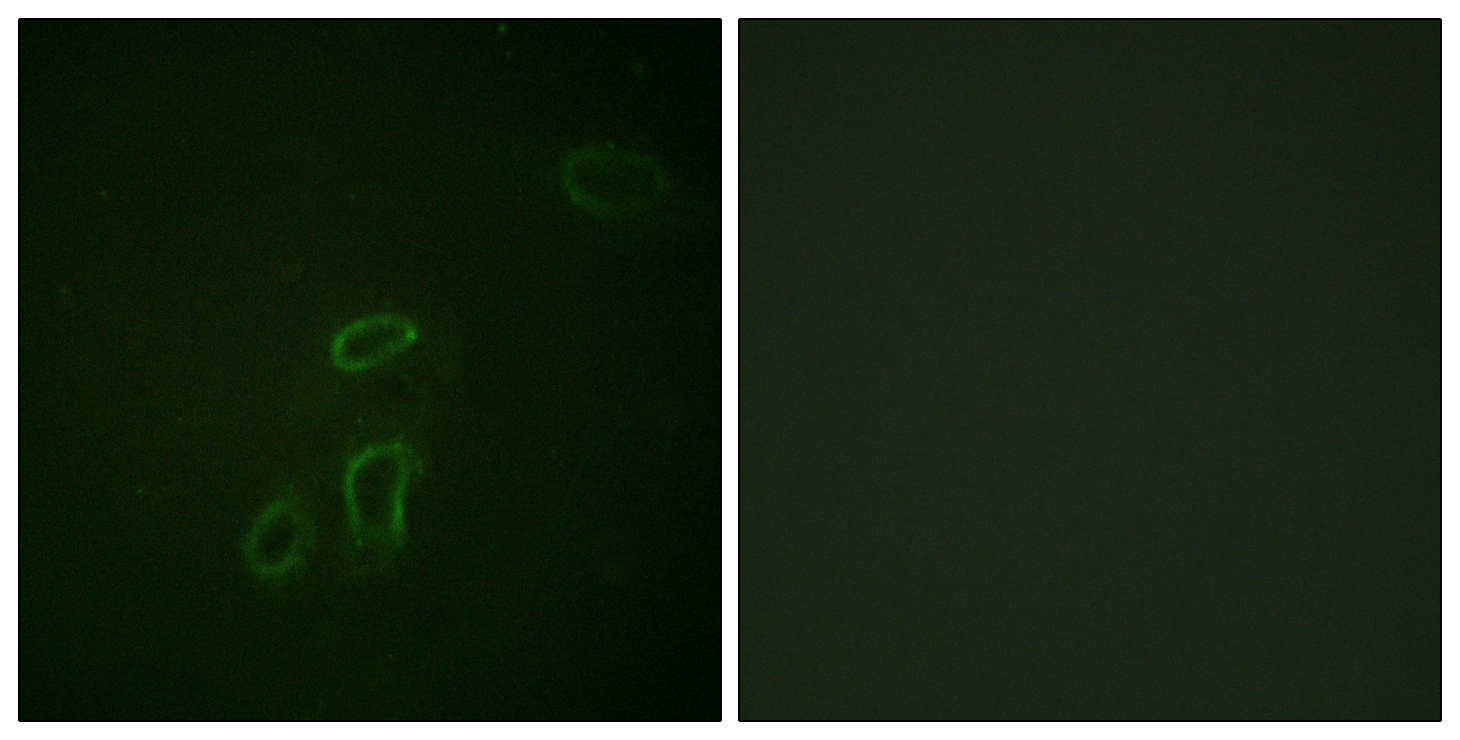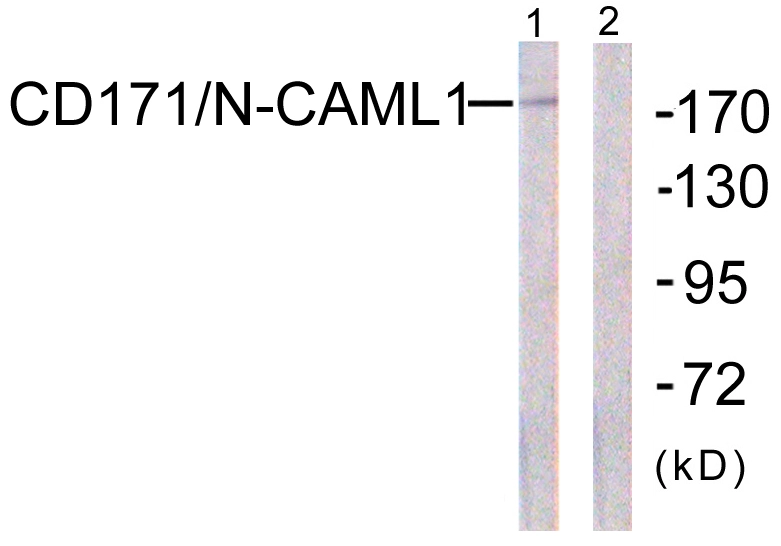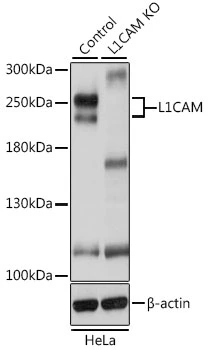
ICC/IF analysis of HepG2 cells using GTX87010 L1CAM antibody. The picture on the right is blocked with the synthesized peptide.
L1CAM antibody
GTX87010
ApplicationsImmunoFluorescence, Western Blot, ImmunoCytoChemistry
Product group Antibodies
TargetL1CAM
Overview
- SupplierGeneTex
- Product NameL1CAM antibody
- Delivery Days Customer9
- Application Supplier NoteWB: 1:500~1:1000. ICC/IF: 1:100~1:500. *Optimal dilutions/concentrations should be determined by the researcher.Not tested in other applications.
- ApplicationsImmunoFluorescence, Western Blot, ImmunoCytoChemistry
- CertificationResearch Use Only
- ClonalityPolyclonal
- ConjugateUnconjugated
- Gene ID3897
- Target nameL1CAM
- Target descriptionL1 cell adhesion molecule
- Target synonymsCAML1, CD171, HSAS, HSAS1, HYCX, MASA, MIC5, N-CAM-L1, N-CAML1, NCAM-L1, S10, SPG1, neural cell adhesion molecule L1, antigen identified by monoclonal antibody R1
- HostRabbit
- IsotypeIgG
- Protein IDP32004
- Protein NameNeural cell adhesion molecule L1
- Scientific DescriptionThe protein encoded by this gene is an axonal glycoprotein belonging to the immunoglobulin supergene family. The ectodomain, consisting of several immunoglobulin-like domains and fibronectin-like repeats (type III), is linked via a single transmembrane sequence to a conserved cytoplasmic domain. This cell adhesion molecule plays an important role in nervous system development, including neuronal migration and differentiation. Mutations in the gene cause X-linked neurological syndromes known as CRASH (corpus callosum hypoplasia, retardation, aphasia, spastic paraplegia and hydrocephalus). Alternative splicing of this gene results in multiple transcript variants, some of which include an alternate exon that is considered to be specific to neurons. [provided by RefSeq, May 2013]
- Storage Instruction-20°C or -80°C,2°C to 8°C
- UNSPSC12352203



![GTX23200 at a dilution of 1/1000, staining L1CAM (green; Alexa 488 secondary at 1/2000) on 30m coronal rat brain tissue sections in free floating IHC. Images showing neuron body, cytoplasm and axon labeling: [A] neuron; 40x objective [B] neuron and axons;](https://www.genetex.com/upload/website/prouct_img/normal/GTX23200/L1CAM-antibody-UJ127-GTX23200-IHC-1_w_23060620_589.webp)
![FACS analysis of HEK293T cells transfected with either L1CAM plasmid(Red) or empty vector control plasmid(Blue) using GTX84232 L1CAM antibody [2G9].](https://www.genetex.com/upload/website/prouct_img/normal/GTX84232/GTX84232_330_FACS_w_23061420_550.webp)
![FACS analysis of Jurkat cells using GTX84236 L1CAM antibody [1A8]. Red : Primary antibody Blue : Negative control antibody](https://www.genetex.com/upload/website/prouct_img/normal/GTX84236/GTX84236_331_FACS_w_23061420_979.webp)
![IHC-P analysis of human liver tissue using GTX84241 L1CAM antibody [2C7]. Antigen retrieval : Heat-induced epitope retrieval by 10mM citrate buffer, pH6.0, 100oC for 10min.](https://www.genetex.com/upload/website/prouct_img/normal/GTX84241/GTX84241_2483_IHC-P_w_23061420_574.webp)
![FACS analysis of HEK293T cells transfected with either L1CAM plasmid(Red) or empty vector control plasmid(Blue) using GTX84244 L1CAM antibody [1H3].](https://www.genetex.com/upload/website/prouct_img/normal/GTX84244/GTX84244_335_FACS_w_23061420_966.webp)

![WB analysis of G361 cells using GTX40148 L1CAM antibody [UJ127.11]. Dilution : 0.5 microg/mL(Lane 1) and 0.25 microg/mL(Lane 2)](https://www.genetex.com/upload/website/prouct_img/normal/GTX40148/GTX40148_WB_20210302_w_23060820_416.webp)